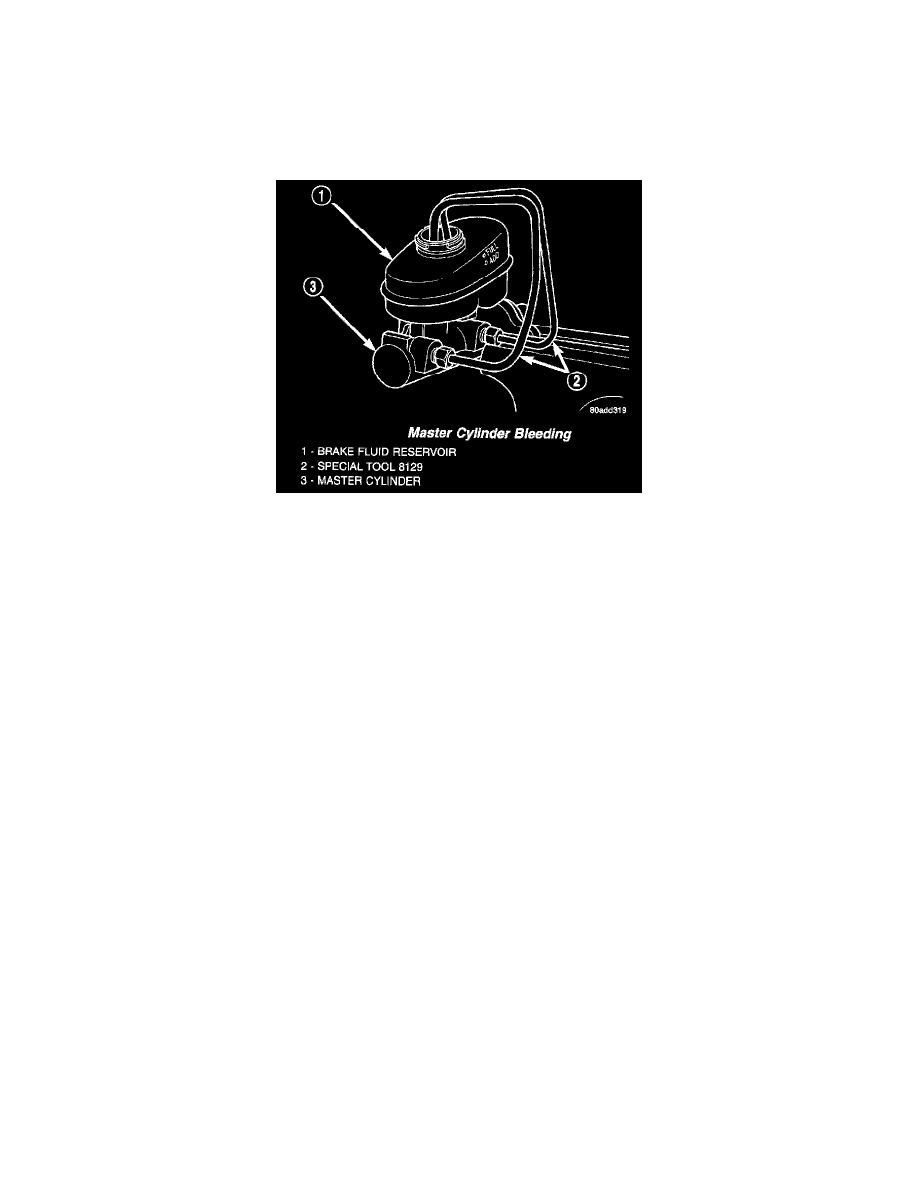Prowler V6-3.5L VIN G (1999)

Brake Master Cylinder: Service and Repair
Master Cylinder Bleeding
Bench Bleeding
Note: It is not necessary to bleed the entire hydraulic system after replacing the master cylinder fluid reservoir, providing that the master cylinder has
been filled and bled prior to installation.
1. Attach Bleeding Tubes, Special Tool 8129 to the master cylinder. Position bleeding tubes so outlets will be below the surface of the brake fluid
when the fluid reservoir is filled to the proper level.
2. Fill the fluid reservoir to the proper level with brake fluid conforming to DOT 3 specifications such as Mopar or Equivalent.
3. Using a wooden dowel, slowly depress the piston of the master cylinder until it has bottomed in the master cylinder then allow the piston to return
to the released position. Repeat this step several times until no more air bubbles are expelled from the bleeding tubes.
4. Remove the bleeding tubes from the master cylinder.
5. Plug the output ports of the master cylinder and install the cap on the fluid reservoir.
6. Install the master cylinder on the vacuum booster. Refer to Removal And Installation for the procedure.
Manual Bleeding
Note: Correct manual bleeding of the brakes hydraulic system will require the aid of a helper.
Note: The following wheel sequence should be used when bleeding the brake hydraulic system. The use of this wheel sequence will ensure adequate
removal of all trapped air from the brake hydraulic system.
-
Left Rear Wheel
-
Right Front Wheel
-
Right Rear Wheel
-
Left Front Wheel
Caution: Slightly opening the bleeder screw often restricts the flow of brake fluid. A slow weak flow of brake fluid from the bleeder screw will NOT
get all the air out.
1. Pump the brake pedal three or four times and hold it down before the bleeder screw is opened.
2. Push the brake pedal toward the floor and hold it down. Then open the left rear bleeder screw at least 1 full turn. When the bleeder screw opens
the brake pedal will drop all the way to the floor.
3. Release the brake pedal only after the bleeder screw is closed.
4. Repeat steps 1 through 3, four or five times, at each bleeder screw in the required sequence. This should pass a sufficient amount of fluid to expel
all the trapped air from the brake system. Be sure to monitor the fluid level in the master cylinder, so it stays at, a proper level so air will not enter
the brake system through the master cylinder.
5. Test drive the vehicle to be sure the brakes are operating correctly and a solid brake pedal has been obtained.
